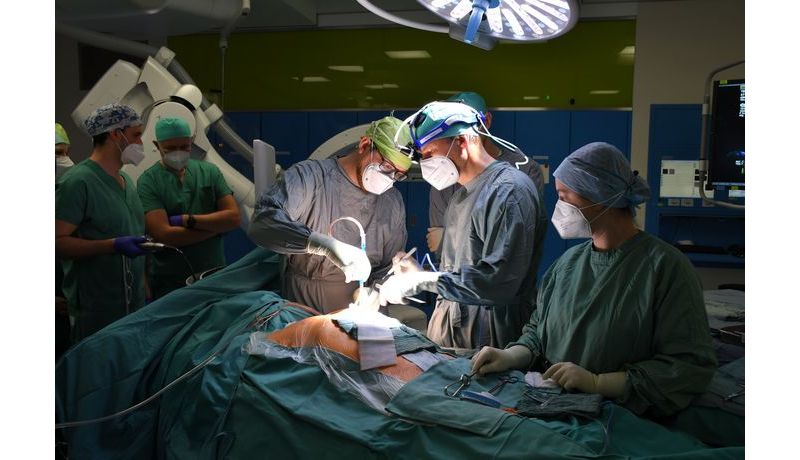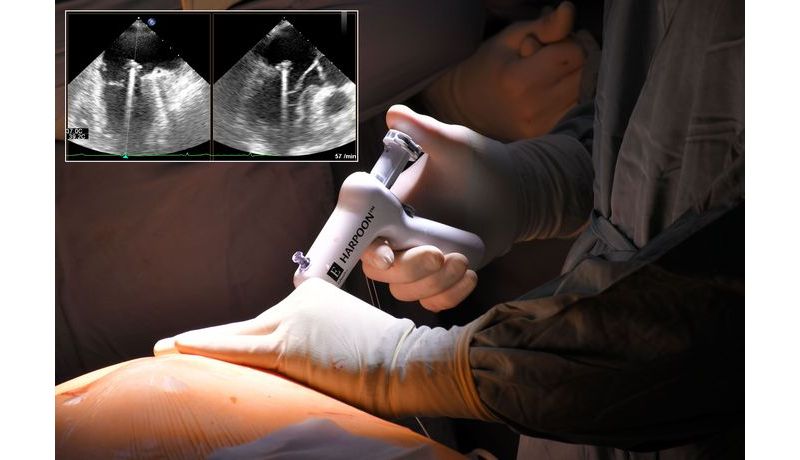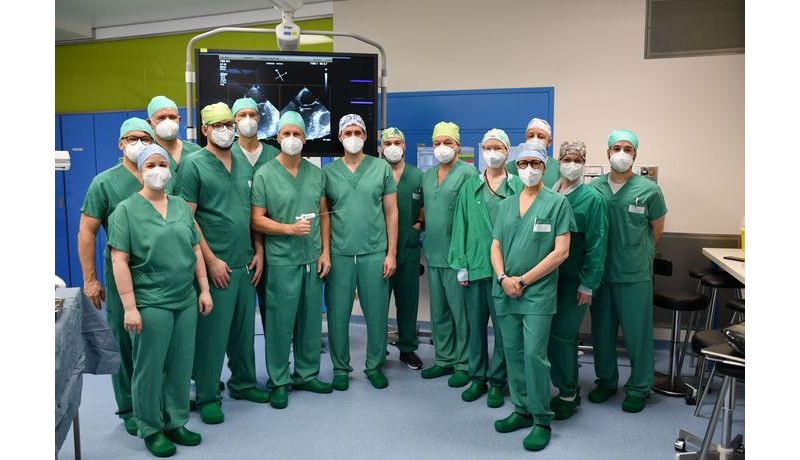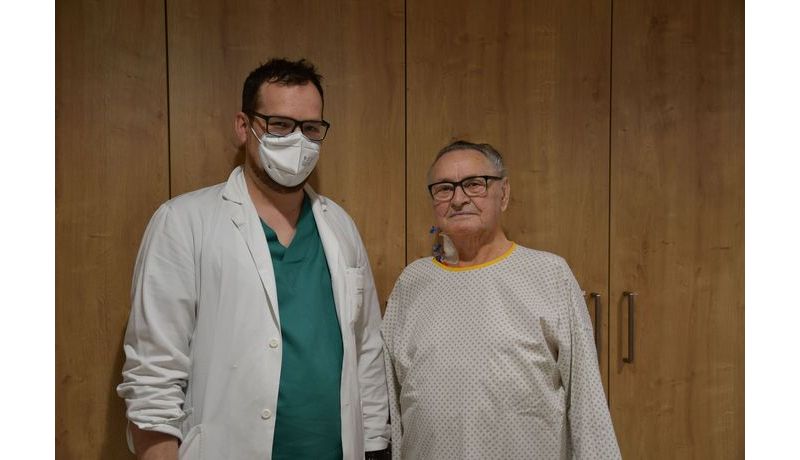Together with his team and for the first time in Austria, Prof. Andreas Zierer (head of the Department of Cardiovascular and Thoracic Surgery) performed mitral valve reconstruction on a beating heart, without a sternotomy or a heart-lung machine.
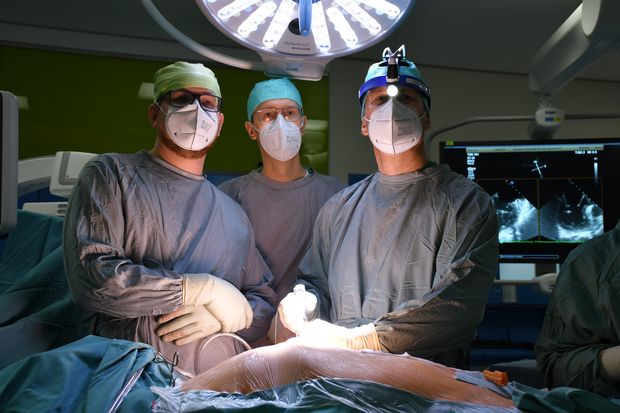
The surgical approach to treat mitral valve disease has undergone a transformation in recent years. New technologies and concepts, such as the HARPOON ® system, have introduced a lateral, minimally invasive approach to repair or replace the mitral valve, omitting the need for a sternotomy. In some cases, the heart-lung machine is no longer required and the procedure can be performed while the heart is still beating.
Mitral valve repair involves making a 5-cm keyhole incision on the left side of the chest wall and inserting the device at the apex of the heart to enable multiple cords to be deployed. The cords are pierced through the mitral leaflet like a harpoon, hence the name of the device. While the cardiac surgeon inserts the device, the cardiologist continuously monitors the HARPOON ® system’s position using echocardiographic imaging. Once the surgeon has determined the optimal placement for an artificial cord, a specially designed needle makes a tiny hole and sends the cord material through the flap. The sequence is repeated for the desired number of cords. This innovative technique has only been used about 200 times around the world and has now been employed at the University Heart Center in Linz.
The 83-year-old patient was not a suitable candidate for conventional minimally invasive mitral valve reconstruction, and conventional open-heart surgery at this age would be too risky. After conducting preliminary examinations, doctors determined that he would be a perfect candidate for the new HARPOON ® system.
The minimally invasive valve reconstruction procedure was performed without complications and on the following day after the procedure, the patient was transferred to a regular ward at the Kepler University Hospital. On the second day after surgery, the patient was already able get up out of bed and was fairly mobile on his own.
A post-operative examination showed no mitral valve regurgitation and the patient was released from the hospital.







